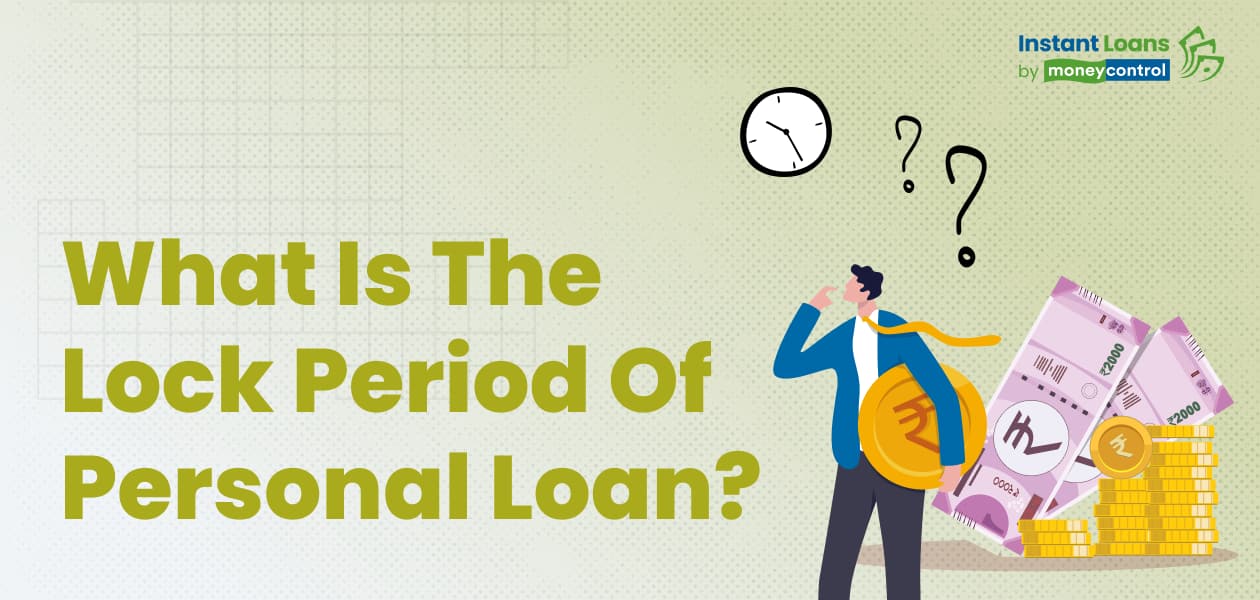17 July, 2025 | 17:07 IST

When you are applying for a personal loan, it's essential to go through all the terms and conditions before completing the application. From the repayment tenure to the interest charges, everything must be calculated beforehand to ensure that the loan offer fits best to your financial needs. It also helps in avoiding a debt burden in future due to EMI defaults.
One of the most important things you should definitely take into account is the lock-in period. This plays an essential role in your financial decision, especially if you're planning to prepay or foreclose your loan.
Table of Contents
The time frame when you cannot completely repay or foreclose on your personal loan, even if you are financially prepared, is known as the personal loan lock-in period. During the lock-in period, you are expected to pay your equated monthly instalments (EMIs) every month and pre-payment and fore-closure is not allowed throughout this duration.
This is usually set by the bank or the lending institution at the time of loan disbursal. The lock-in period personal loan typically ranges from 6 months to 12 months. You may also be charged penalty charges or pre-closure charges on foreclosure or full repayment.
For example, if you have taken a personal loan of Rs 5 lakh and wish to repay it within 3 months, you may not be allowed to do so if there is a lock-in period. Since banks may not earn enough interest if you repay the amount early, they set a fixed period, usually between 6 months to 12 months, during which you are required to make regular EMI payments at the agreed interest rate.
Once that lock-in period gets over, you can prepay or foreclose the loan without facing any penalties.
Looking for an instant loan without the paperwork hassle? Moneycontrol has partnered with 8 trusted lenders to offer personal loans of up to Rs 50 lakhs. The process is entirely online—just pick your EMI, fill in your details and complete the digital KYC. Plus, interest rates start from just 10.50% per annum.
Foreclosure charges are fees levied by the banks or lenders when you decide to repay your entire outstanding loan amount before the end of the tenure. Every bank or lending institution charges around 2 to 5% of the outstanding amount at the time of foreclosure. In case of some lenders, the foreclosure charges could be higher for the foreclosure of the personal loan lock-in period.
For example, if your outstanding loan amount is Rs 3 lakh and the foreclosure charge is 3%, then you will be paying Rs 9,000 extra.
You cannot close the loan even if you have enough funds to repay it. During the lock-in period, the bank may either deny your request or charge a heavy penalty. Since you are required to continue paying your regular EMIs with interest during this time, you will end up paying more interest. You would have saved this extra amount if early closure had been allowed.
Lock-in period can affect you financially, especially if you want to take out another loan. Since you already have an ongoing personal loan, lenders may consider you a higher risk and can lower your loan eligibility and charge higher interest rates.
However, foreclosure is beneficial if the total interest you would pay over time is more than the foreclosure charges.
You can explore multiple personal loans through the Moneycontrol app and website. Personal loan lock-in period may differ for these loans but you can borrow at an interest rate as low as 10.5% per annum. The maximum loan amount is Rs 50 lakhs and the completely paperless process ensures quick approval and disbursement.
While applying for a personal loan, it is essential to understand the lock-in period and foreclosure charges. This will help you make informed decisions, plan your repayments better and protect you from unexpected penalties if you wish to close the loan early.
Share it in your circle
Table of Contents
Explore Top Lenders for Instant Loan upto
Get Instant Loan up to ₹50 Lakhs with Zero Paperwork from Top Lenders
 100% Digital
100% Digital Quick Disbursal
Quick Disbursal Low Interest Rates
Low Interest Rates